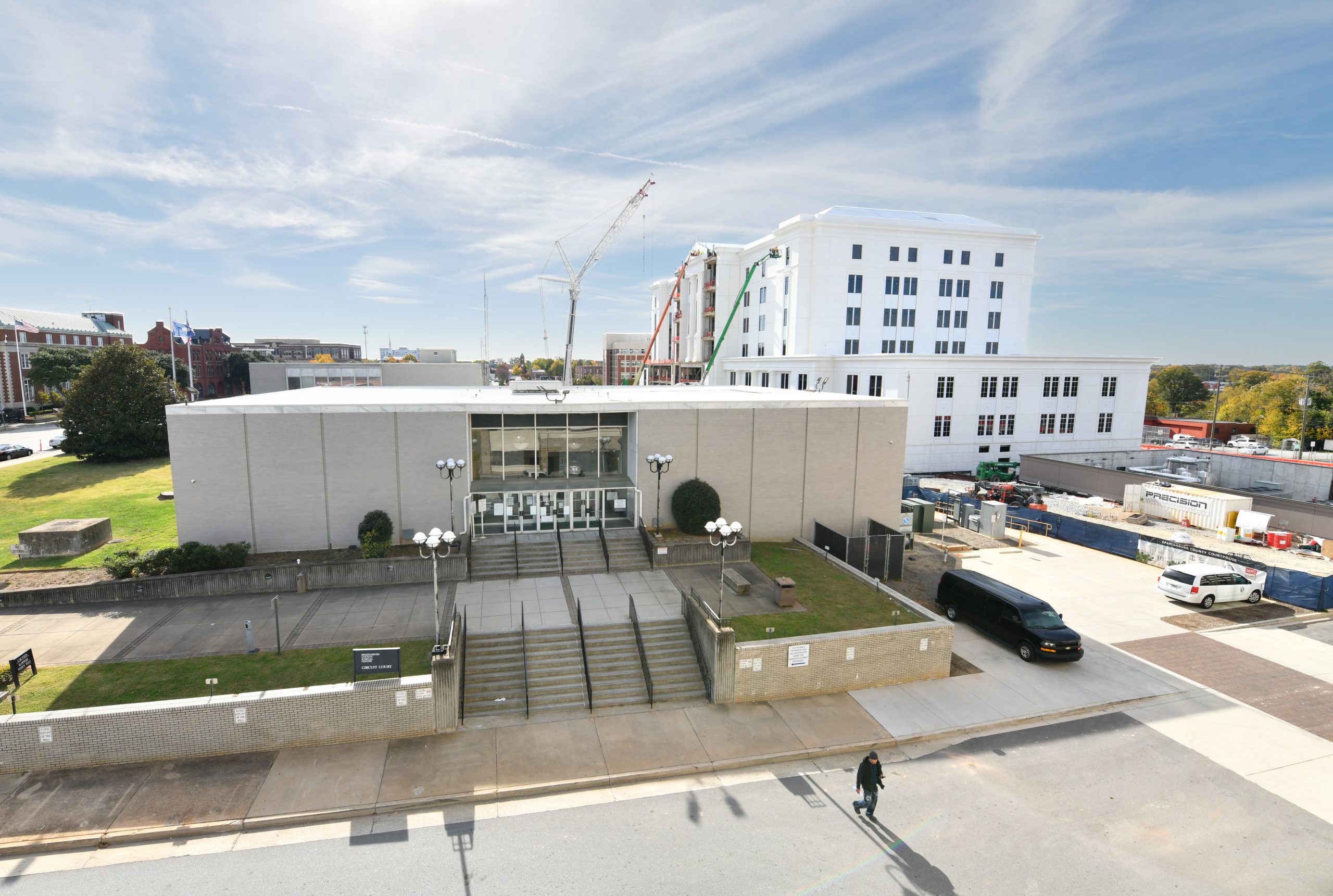

More than 60 years ago, Tindall began its journey in Spartanburg, SC, armed with only a shed and a small team of dedicated employees. In those early days, our projects were humble in scale, but they were integral to laying the foundation on which Tindall found growth and success. Now, after all these years, Tindall has come full-circle with an opportunity to contribute to perhaps one of the most nostalgic projects we’ve been a part of.
Through a blend of innovation, craftsmanship, and the wealth of experience we’ve gained, Tindall poured its heart and soul into the construction of the new Spartanburg County Courthouse. To our team, this is more than just a structure. It’s a symbol of Tindall’s journey — from where we began to the exciting path that lies ahead.

Owner
Spartanburg County
Architect
McMillan, Pazdan, Smith Architecture/ McCutchen Engineering Associates
Contractor
Turner Construction, Charlotte
Location
Spartanburg, SC
To successfully achieve the intricate design details required for this project, Tindall constructed a total of seventy-six different molds. The vertical erection sequence posed additional challenges, demanding most of the molds be completed before production began—an intricate process requiring the seamless coordination of eight skilled artisans.
Various products and techniques were employed to build the forms necessary to successfully complete this project. Notably, Elastomeric “Rubber” Split Face form liners were used, cast with real chiseled stone sourced from China and imported to the US for molding purposes. Fiberglass wood molds and massive resin-coated concrete molds were also used to shape the cornice parts, columns, and wall panels. These processes were supported by PCI Associate Members, including Architectural Polymers, who supplied the Elastomeric form liner, and Leviat, who provided the galvanized and lifting inserts.
The scale of this project was truly remarkable, with Tindall utilizing over 1000 precast components. Some notable elements included:
– Full-round entasis columns adorned with Romanesque-patterned bases and capitals.
– Monolithic corner cornice pieces of varying sizes, from 3 feet to over ten feet in length, and weighing approximately twenty-five to forty thousand pounds each.
– Architectural wall panels featuring projecting window surrounds with an average width of twelve feet and weighing around 15,000 pounds each. Once on site, the wall panels were pieced together to make up the ten-by-forty-foot window openings.
Various challenges added complexity to the project, including:
– Ensuring the white concrete products remained immaculate throughout production, storage, shipping, and erection.
– Implementing measures to break the vacuum between the intricate molds and products during stripping to prevent chipping and spalling.
– Developing a mix designed to consistently produce bug-hole and pin-hole-free exterior surface finishes without the use of internal or external vibration.
Tindall’s in-house engineering team played a pivotal role in this endeavor. They coordinated directly with the Architect and Engineer of Record’s design teams, to develop the precast design, drafting, details, connection theology, product configuration, and layout. This collaborative effort spanned a year and a half before the final drawing submittal, and nearly two years before the production of the first precast piece.
The successful completion of this intricate and multifaceted project stands as a testament to Tindall’s remarkable journey—from where we began, where we are now, and the boundless possibilities that arise when some of the most talented teams in the construction industry come together. The Spartanburg County Courthouse is not just a structure; it is a testament to our unwavering commitment to excellence, innovation, and shaping a brighter future for the communities we serve.